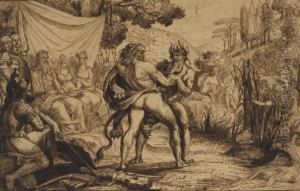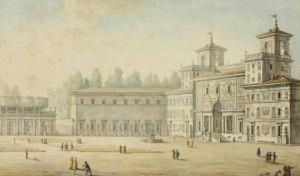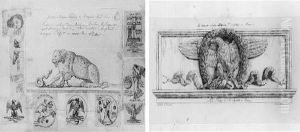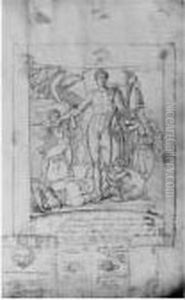Elie Honore Montagny Paintings
Elie Honoré Montagny was a French artist known for his work in engraving and miniature painting. Born in 1789, Montagny lived through a turbulent period in French history that included the French Revolution, the Napoleonic Wars, and the various political upheavals that characterized the 19th century. Despite the chaotic backdrop, Montagny managed to establish himself as a skilled artist, although he is not amongst the most widely recognized figures in art history.
Montagny's artistic career was multifaceted; he was adept in the art of engraving and in creating miniature portraits, a popular form of portraiture during the 18th and 19th centuries. Miniature painting was highly valued for its intricate detail and the skill required to create such small yet accurate representations of the subject. Such artworks were often used as personal mementos or as small-scale displays of wealth and status.
Details of Montagny's training and early career are limited, but it is known that he worked in Paris, which was the cultural and artistic hub of France. During his lifetime, he would have witnessed the shift from the Rococo style, which was popular in the pre-revolutionary period, to Neoclassicism, which became the dominant artistic movement in the aftermath of the Revolution, reflecting a return to classical ideals of harmony, simplicity, and proportion.
Montagny's engravings and miniature paintings would have served a clientele that appreciated the technical skill and artistry involved in these mediums. Engravings were a key method of reproducing images before the advent of photography and were used for book illustrations, reproductions of paintings, and for the dissemination of ideas and images across Europe.
Elie Honoré Montagny's exact contributions to the art world and the extent of his oeuvre are not well-documented in the annals of art history. He died in 1864, having lived through a period of significant artistic development and change. While he may not have achieved the fame of his contemporaries, his work remains a testament to the craftsmanship and aesthetic values of his time.




